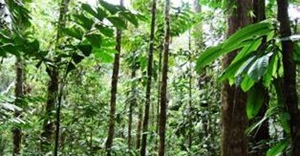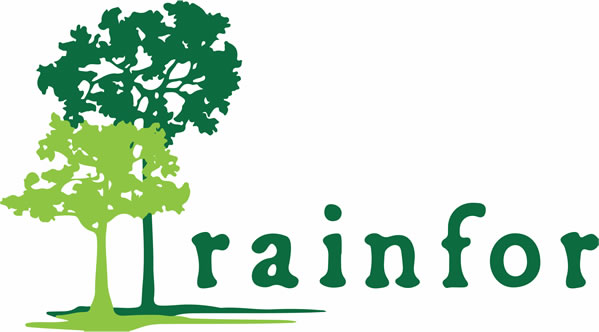
The Amazon Forest Inventory Network is an international collaboration to understand the dynamics of Amazon forest ecosystems, which hold more species, water and carbon than any other on Earth. Since 2000 we have developed a community effort to monitor the Amazon long-term, on-the-ground and tree-by-tree. This centres on long-term plots, and includes extensive collection of soil and plant traits and provides a platform for intensive monitoring of a subset of sites. By compiling and comparing these studies on a regional scale a whole new level of information becomes available. This provides vital insights into the mechanisms underlying the current responses of Amazonian ecosystems to climate – and their future health in a rapidly changing world.
RAINFOR’s scientific contributions span more than 300 articles. Our large-scale analyses include discovering the tropical forest carbon sink, revealing fundamental changes in tree growth and mortality, detecting and attributing the climate-sensitivity of Amazon forests, and discovering how sustained biodiversity changes caused by climate. As the Amazon changes it becomes more vital than ever to know what is happening on the ground.
RAINFOR brings together investigators across the nine nations of Amazonia to enable collaborative, supportive, sustainable and impactful science.
Our Objectives
- Create and sustain long-term sentinel sites for tracking the health of Amazon forests.
- Understand how the natural and human environment controls forest biodiversity and carbon processes.
- Reveal both how climate and atmospheric changes impact the dynamics and carbon of Amazon forests – and how forests are (or are not) resilient to these changes.
- Help support new generations of Amazon scientists, including training in methods for monitoring species, dynamics and carbon processes, and opportunities to connect with other researchers, share and manage data, and lead analyses.
- Help calibrate, validate and benchmark vegetation dynamic models, remote-sensing missions and sensors, and other community efforts to understand the future, present and past of Earth’s forests.
- Support local to global efforts to adapt to climate change, by contributing to other forest initiatives, supporting Nationally Determined Contributions to climate change adaptation, and improving IPCC forest carbon estimates.
About Amazonia
At 6 million km2, the Amazon forest covers an area 25 times as great as the United Kingdom, 15 times the size of California, and spans nine countries of which the largest is Brazil. It contains one fifth of all tree species, one fifth of carbon in Earth’s biomass, and is home to millions of people. Each year Amazon forests cycle 18 billion tons of carbon – twice as much as the emissions of all fossil fuels burnt in the world.
Amazon forests are under huge pressure through deforestation and exploitation of natural resources. They are facing a hotter climate, changing rainfall patterns, and a changing atmosphere. Because of the vast scale of Amazonia, relatively small changes in the structure and function of these forests have global consequences for Earth’s biodiversity and the rate of climate change.
RAINFOR research discovered that mature forests have stored extra carbon over recent years, amounting to hundreds of million tonnes extra every year. This is enough to slow the rate of climate change, but our work also shows how this subsidy from nature is under threat from climate change itself. The Amazon is changing. Careful, on-the-ground monitoring of forests across the vast region is more essential than ever to understand the global climate benefits that Amazonia provides, assess the threat of a declining carbon sink, and know the scale of emission cuts needed elsewhere.
Consistent, repeated, comparable measurements are the cornerstone for understanding long-term change. RAINFOR welcomes all partners who share our vision and our focus on the people who make these possible in the Amazon.
